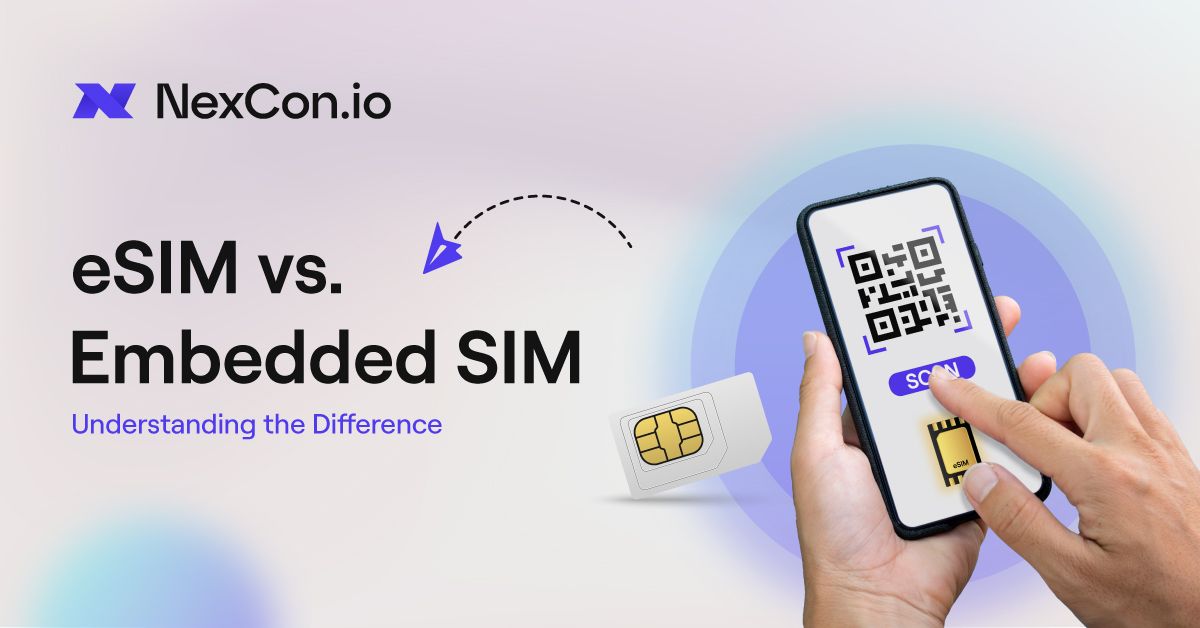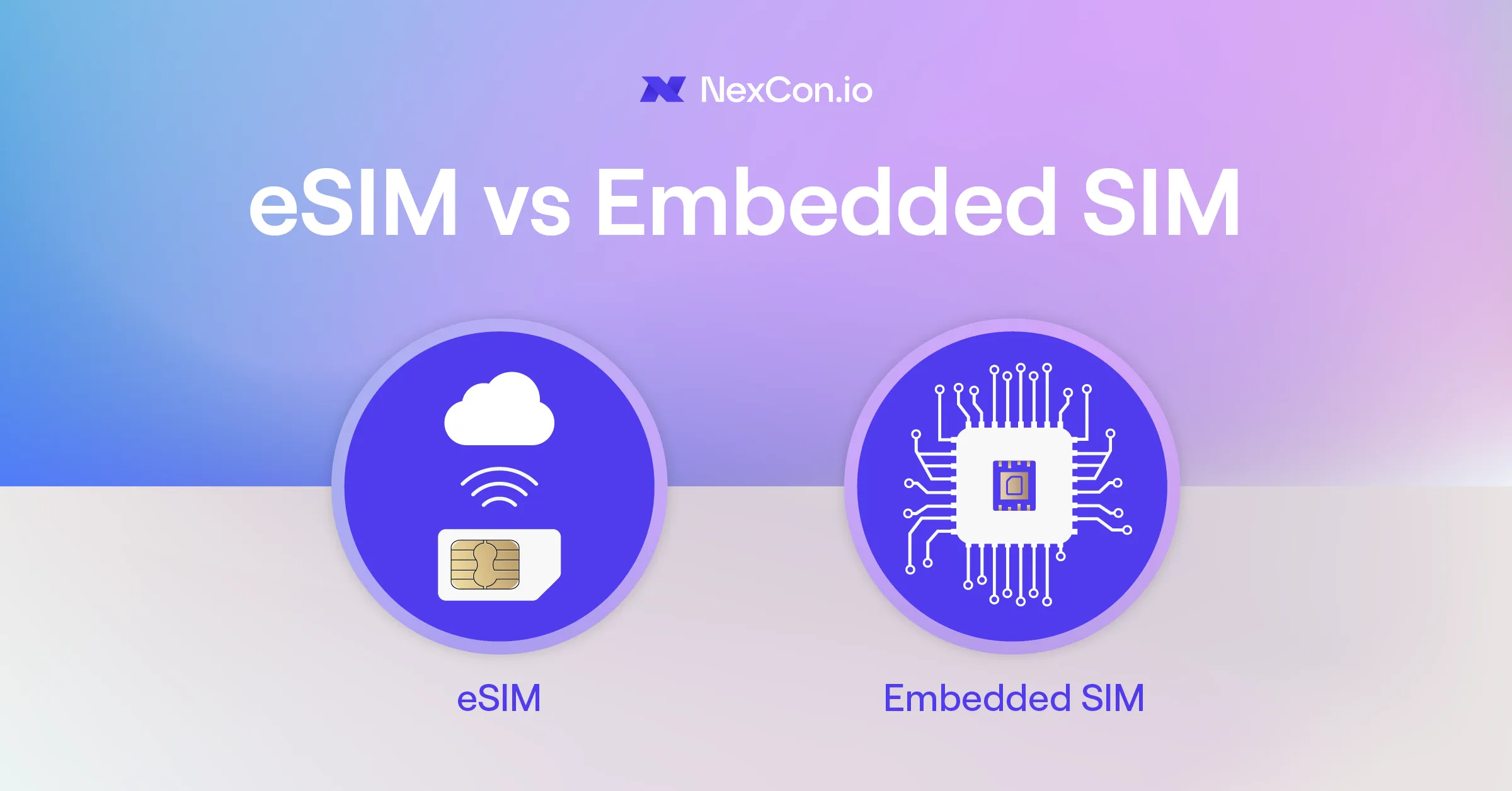eSIM vs. Embedded SIM: A Guide to Understanding the Difference

Morten Riber | April 30, 2024

We are often asked about what the difference between eSIM and embedded SIM is. Similar to many other industries, the IoT sector is ladened with terms, such as eSIM, eUICC, embedded SIM and MFF2, which can make it a jungle to navigate in. To make matters worse, some of the terms mean different things depending on whether it is in a consumer context or business context. Furthermore, the inconsistent use of terminology across the industry adds to the confusion as well.
So gear up, and start exploring the IoT industry terms with us! We promise you that when you are finished reading this post, you will have a much better understanding of what the different terms mean.
What is an embedded SIM?
While often confused with eSIM due to similar naming, an embedded SIM refers specifically to the physical form factor where a SIM chip is permanently embedded into a device’s circuit board. This is commonly used in industrial and IoT applications where devices may be exposed to harsh environments or where changing a SIM card physically is impractical. Embedded SIMs in this context are also known as MFF2 SIMs or informally as “chip SIMs”.
Key features of embedded SIMs:
- Permanent integration: Soldered onto the device’s motherboard, making it robust and secure for industrial use.
- Durability: Built to withstand extreme conditions, making it ideal for devices used in challenging environments.
- Security: Since it cannot be easily removed or swapped, it offers enhanced security for sensitive applications.

What is an eSIM?
An eSIM is a digital SIM that allows users to activate or swap a cellular plan from a carrier without having to use a physical SIM card. Essentially, it operates using a technology called eUICC, enabling the storage and management of multiple profiles simultaneously – although only one can be active at a time. This is facilitated by remote provisioning—meaning, profiles can be transferred, updated or activated over-the-air (OTA) using software and API calls.
The advantages of eSIMs include:
- No physical SIM needed: Directly embedded into the device, it eliminates the need for a physical SIM slot.
- Remote management: Profiles can be altered remotely without the need to physically exchange SIM cards.
- Multi-carrier access: A single eSIM can store multiple carrier profiles, allowing a device to switch between networks as needed. This enables global deployment of identical hardware devices, where decisions about carrier selection can be made later.
eUICC further explained
As mentioned, the embedded Universal Integrated Circuit Card (eUICC) is a crucial component in eSIM technologies and refers to the software standard that allows users to manage multiple carrier profiles and switch between them over-the-air without needing a physical swap of the SIM card. This makes the technology particularly suitable in IoT applications where devices need to connect across different networks and geographies. Note that the eUICC technology can be placed on any form factor such as 1FF, 2FF, 3FF, 4FF, MFF2 as well as any other type of hardware chip that conforms to the eUICC standard defined by GSMA. It is important to note that in some contexts, eUICC might be referred to as an embedded SIM, which is why we recommend always try establishing how the terms is used if in doubt.
Consumer eSIM – Push vs. Pull
Consumer eSIMs are designed for devices used directly by individuals, requiring the user’s presence for manual configuration, where the user “pulls” the new carrier profile. This “pull” method contrasts with the “push” method used with business eSIMs, where profiles are loaded remotely to a device by operators using software and API calls. The “pull” architecture is particularly suited for personal devices such as smartphones and tablets but would not be fitting for IoT devices placed in areas that are hard to reach.

Global IoT platform
At NexCon.io, we understand the importance of connectivity solutions that are both innovative and reliable. As a NexCon.io customer, you are able to purchase IoT and M2M SIM cards directly in the webshop and manage them easily in the dashboard afterwards, with many available features such as data pooling, bulk management and IMEI locking.
By choosing NexCon.io, you’re opting for unparalleled service, flexibility and quality, ensuring your devices remain connected in an increasingly interconnected world.
Create your free account in less than 30 seconds here or contact our sales team on hi@nexcon.io and we will start finding the best solution in collaboration with you.